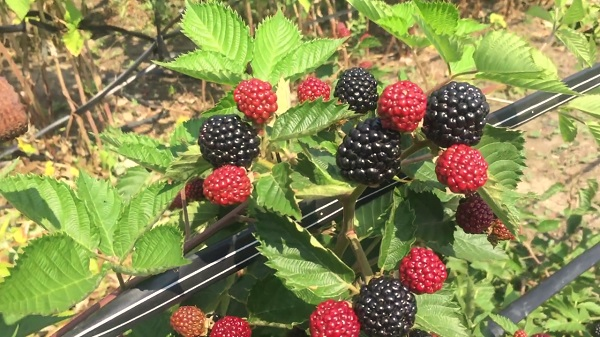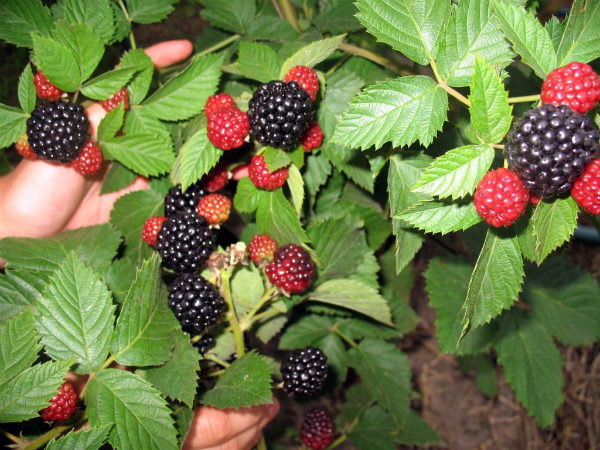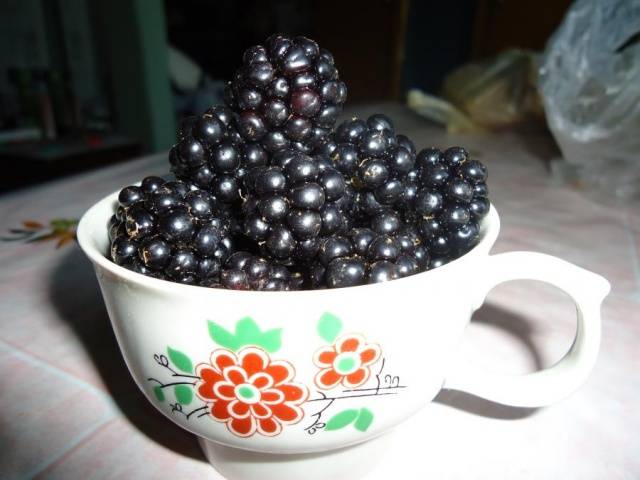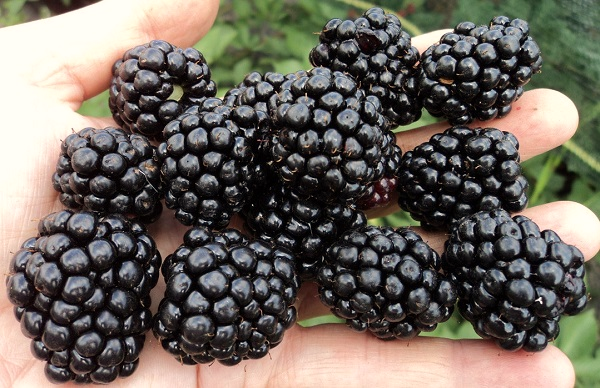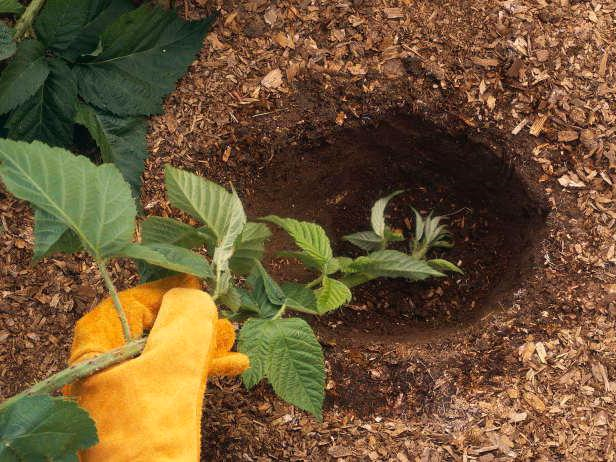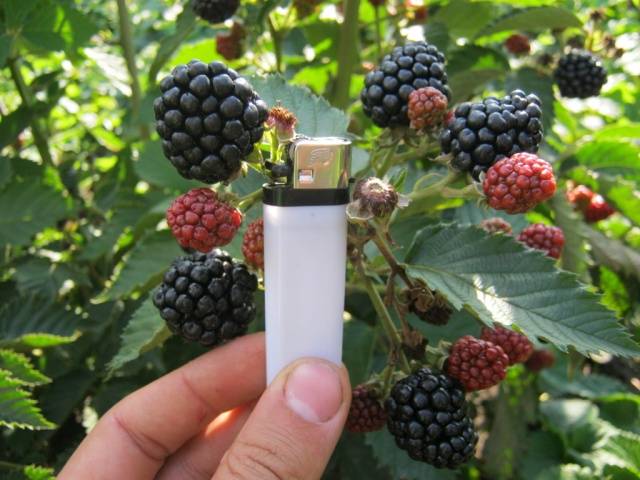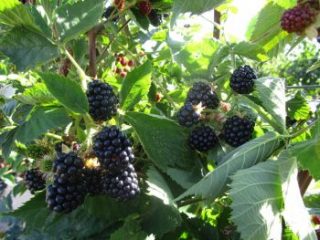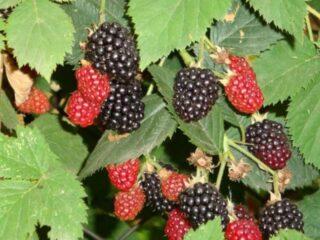Content
Any gardener wants to grow a tasty and healthy berry in his garden. For these purposes, the Jumbo blackberry is ideal, famous for its sweet fruits and unpretentiousness. But, so that there are no surprises in the process of growing this crop, you should carefully read the characteristics of the variety. blackberry Jumbo and recommendations for its care.
Breeding history
Blackberries came to Europe from America in the 18th century. For a long time, she was a wild forest plant, but breeders could not pass by tasty, juicy, and healthy berries. Within a short time, quite a few new varieties were bred, distinguished by high yields and suitable for planting in various regions.
Jumbo is a modern, high-yielding, thornless blackberry cultivated by the efforts of French breeders. He very quickly won the well-deserved love of gardeners.
Description of berry culture
The widespread use of this variety is due to the high taste of the fruit and unpretentious care. Reviews of the Jumbo blackberry variety are only positive. Although this is a relatively new variety, it has already become popular.
General understanding of the variety
The Jumbo blackberry bushes are quite powerful, but compact, not growing to the sides. Shoots generally rush upward, and over a year in growth they add only 45-55 cm. Growing up to a height of 1.5 m, they begin to slope to the ground. Therefore, for blackberry Jumbo, you need to install supports (trellises) for garters. Only 2-3 new shoots appear per year.
Jumbo belongs to the thornless blackberry varieties. The blackberry leaves of this variety are dark green, carved, with teeth, oval in shape.
Berries
Blackberries resemble raspberries and mulberries at the same time. This variety has multi-berry clusters. Jumbo berries are record large. In this he is the undisputed leader among other blackberry varieties.
Fruits are black, glossy, weighing up to 30 g. The skin covering the berries is strong, rather resistant to mechanical damage.
The berries are dense, but juicy. The very sweet pulp leaves behind a slightly sour taste. Drupes, although small, are not hard.
Jumbo berries have excellent transportability. In the refrigerator, berries, without compromising their quality, can be stored for more than a week. At the same time, they do not wrinkle and do not emit juice.
Characteristic
Before planting Blackberry Jumbo in your garden, it is worth weighing the pros and cons to find out the strengths and weaknesses of this variety.
Main advantages
The advantage of the Jumbo variety is not only high taste, but also heat resistance. It tolerates high temperatures perfectly. At the same time, the quality of the harvest does not decrease, the berries do not bake in the sun.
The blackberry Jumbo is undemanding to the soil, it is not afraid of the sun. Insufficient lighting does not affect the growth of the shrub.But the cold and dampness of the Jumbo blackberry does not tolerate well, therefore it needs shelter even in temperate climates.
Flowering period and ripening time
Jumbo is a mid-season variety. In southern regions, blackberries begin to ripen in the second half of July, and in regions with colder climates - in early or mid-August. Since the fruiting of Jumbo blackberries takes a long period, you can see both flowers and berries on the bush at the same time.
Yield indicators, fruiting dates
The first year, while the blackberry bush grows and forms, you should not expect a harvest. But next year, the Jumbo variety will delight you with sweet berries.
Fruiting blackberries Jumbo takes up to six weeks. Up to 25-30 kg of berries are harvested from one bush. The unpretentiousness of the variety allows Jumbo to bear fruit in any conditions.
Scope of berries
Blackberries are used fresh, as well as a filling for pies. They can be dried, dried, cooked blackberry jams, preserves, compotes. Excellent blackberries are suitable for making marmalade, jelly. She found her application in winemaking.
Blackberries perfectly retain their excellent taste and do not lose their shape when frozen, which allows housewives to use fresh berries not only in summer, but also in winter.
Blackberries have antiseptic, anti-inflammatory and wound healing properties. In folk medicine, fruits, leaves and flowers of blackberries are used. Tinctures and decoctions are made from them. You can learn more about the benefits from the article…. For linking
Disease and pest resistance
The blackberry has quite a few different diseases, but the Jumbo variety is quite resistant to many of them, which distinguishes it favorably against the background of other varieties.
Jumbo also has few insect enemies, and timely preventive measures reduce the risk of pest attacks to a minimum.
Advantages and disadvantages
Blackberry Jumbo has many more advantages than disadvantages.
| Dignity | disadvantages |
| Large size and weight of fruits | Relatively low winter hardiness |
| The compactness of the bushes | |
| Excellent berry flavor | |
| High productivity | |
| Good transportability | |
| Long terms of fruiting | |
| Long shelf life | |
| Unpretentious care | |
| Disease resistance | |
| Lack of thorns | |
| Heat resistance |
The video about Jumbo Blackberry will allow you to learn a little more about this variety:
Reproduction methods
There are several ways blackberry breeding Jumbo:
- apical layers (rooting of shoots without separation from the bush);
- propagation by cuttings cut from green shoots.
Landing rules
There is nothing difficult in planting Jumbo blackberries. It is enough to adhere to simple rules.
Recommended timing
Jumbo is planted in spring or autumn. Bushes with a closed root system are planted from spring to the first frost.
Choosing the right place
Jumbo blackberries prefer sun and warmth, so it is better to plant them in areas with good lighting, sheltered from the wind, and preferably at a low elevation. Excess moisture is harmful to the plant.
Soil preparation
When planting seedlings, you need to prepare a fertile mixture, which is laid out on the bottom of the dug hole. In order to make a mixture, you need the following components:
- superphosphate - 300g;
- manure - 4 buckets;
- garden soil - 8 buckets;
- wood ash - 700 g.
The soil must be mixed well.
Selection and preparation of seedlings
The best age for planting blackberry seedlings is one and a half years. Moreover, they must have:
- 1-2 stems;
- the presence of a basal kidney;
- developed root system;
- 2 or 3 roots longer than 10cm.
Algorithm and scheme of landing
The recommended scheme for planting seedlings for this variety is 1 mx 2 m. However, thickened plantings are allowed for Jumbo blackberries.
Follow-up care of the culture
Caring for Jumbo Blackberries is quite simple, and includes the following activities:
- watering;
- loosening the soil;
- seasonal and formative pruning;
- deletion weeds;
- top dressing;
- preparation for winter.
Growing principles
Jumbo blackberries need trellises for garters, as the grown shoots at a height of one and a half meters begin to lean towards the ground. And to prevent the formation of chaotic thickets, you need to take care of the plant.
Necessary activities
This variety tolerates drought well, but if possible, it is better to water the plant at least once or twice a week. It is imperative to water it during flowering and fruiting.
In order to increase the Jumbo yield, it is necessary to feed the blackberries in the spring. To do this, 25 g of a nitrogen mixture and a couple of buckets of humus are introduced under the bushes. In summer, 45-55 g of potash or phosphorus fertilizers are used for feeding for each bush.
The rest of the agrotechnical measures (loosening and weeding) are carried out as needed.
Shrub pruning
Correct pruning blackberries promotes its growth and fruiting. The purpose of the spring pruning procedure is to rid the plant of frozen shoots. During autumn, aged, non-fruiting shoots are removed, which only weaken the plant.
Preparing for winter
When preparing Jumbo blackberries for winter, you need to cut off old and weak shoots at the root, leaving 7-9 young and strong ones, which should also be shortened by a quarter (by 20-40 cm).
Having finished pruning, the bush is removed from the trellises, bent to the ground. The soil under the bush is covered with a layer of mulch of 10-12 cm. For this you can use sawdust, pine needles, peat. Cover with agrofibre, film, or roofing material on top.
Diseases and pests: methods of control and prevention
Blackberries are susceptible to these types of diseases:
- non-infectious (excess or lack of trace elements);
- bacterial (root cancer);
- viral (curl, mosaic, yellow mesh, rust).
But the Jumbo variety is quite resistant to disease, and, subject to preventive measures and agrotechnical techniques, it will delight with delicious berries for a long time.
The main enemies of blackberries are pests:
| Pests | Signs | Way to fight |
| Khrushch | Damages roots. The plant withers and dies | 1. Sowing mustard near the blackberry 2. Before planting, soaking the roots in a 0.65% solution of Aktara 3. Use during the growing season for cultivating the soil around the bushes of the preparations Confidor, Antichrushch |
| Raspberry beetle | Damage to leaves, shoots, inflorescences, roots, berries | 1. Preventive seasonal digging of soil under bushes 2. Dusting the dug earth with ash or tobacco dust 3. When buds appear, spray with solutions of Spark, Fufagon, Kemifos |
| Raspberry stem fly | Damage to young shoots | Pruning damaged shoots with their subsequent burning |
| Blackberry mite | Deterioration of the appearance of the plant and the quality of the berries | Spring spraying of shoots (before bud break) with Tiovit or Envidor solutions |
| Spider mite | Yellowing and premature fall of leaves | When the first leaves appear, three times treatment of plants with an interval of 7 days with Fitoverm, BI-58, Aktofit |
Conclusion
Obviously, the large-fruited variety of blackberry Jumbo deservedly enjoys the attention and love of gardeners. It would seem that a foreign hybrid needs to create maximum comfort, but in fact, the variety is unpretentious, high-yielding, and with little effort it will certainly please with an excellent harvest.
